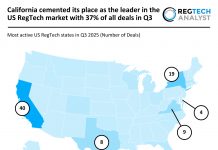AI has shifted from hype to reality in financial crime prevention—and 2025 has made that clearer than ever.
Across top industry events such as Transform Finance, ACAMS chapter meetings, 1LoD gatherings, the FRC Leaders Convention, and Money20/20, regulators and compliance professionals echoed the same message: artificial intelligence is no longer experimental. It’s operational, claims Quantifind.
But while adoption is accelerating, the pressing issue now is whether financial institutions are truly ready to deploy it responsibly.
The momentum behind AI adoption is undeniable. Multiple analyst reports this year supported the same view: institutions are embracing AI in risk and compliance. McKinsey highlighted the rapid implementation of domain-specific models. Deloitte’s Financial Crime Trends report found many firms had moved beyond pilots to production workflows. Forrester named explainability a top priority, while Gartner stressed the growing demand for transparent models. Regulators also set a clear tone—FATF, OCC, and FCA all issued updated 2025 guidance encouraging responsible, explainable, and well-governed AI integration.
Despite this progress, a recurring theme emerged from every event attended by Quantifind in 2025: the biggest obstacle is not the technology itself, but the institution’s readiness to use it. This includes gaps in people, processes, governance, and user competency. It’s no longer enough to install an AI solution—teams must be equipped to understand, manage, and challenge it. As one panelist put it: “AI governance starts with user governance.”
This readiness gap is becoming a critical barrier as investigator roles transform. The shift is clear—from fact-gathering to interpreting AI-generated insights. But few institutions have fully defined the skills needed to support this evolution. FATF and OCC have both called for increased human oversight and documentation. The FCA now links model usage directly to user competency. The industry has accepted the truth: scalable AI depends on scalable user literacy.
To help compliance teams navigate this shift, several recurring insights surfaced at 2025 events. First, AI does not equal ChatGPT. Generative AI has its place, but purpose-built models tailored to sanctions, network risk, and investigations are far more appropriate. Second, explainability is a regulatory requirement, not a nice-to-have. Institutions must show how AI decisions are made, not just that they work. Third, legacy systems are hindering progress, unable to support structured data across siloes. Fourth, model governance is now as much about training users as fine-tuning algorithms. And fifth, AI-literate teams are the ones achieving competitive gains—not because AI replaces humans, but because it enhances their judgement.
Quantifind’s own 2026 AI Readiness Framework outlines the core competencies investigators need to safely and effectively leverage AI. These include skills in analytical interpretation, model interaction, and decision governance. For example, investigators should be able to validate risk scores, challenge model outputs, identify missing data signals, and document decisions clearly enough to satisfy auditors or regulators. In short, AI literacy is becoming a foundational capability.
Quantifind aims to close this readiness gap through its explainable, audit-friendly platform. Features such as evidence lineage, transparent scoring, structured dossiers, and decision clarity help enable defensible investigations. Investigators are not replaced—they are equipped with sharper, faster tools and backed by built-in regulatory alignment.
As 2026 approaches, institutions that invest in AI readiness will outpace those who delay. The message from 2025’s events was clear: boards are demanding modernisation, regulators expect accountability, and investigators deserve better tools. The divide between AI-ready and AI-hesitant firms is widening—and only those who prepare now will lead the next phase of financial crime prevention.
Copyright © 2025 RegTech Analyst
Copyright © 2018 RegTech Analyst






